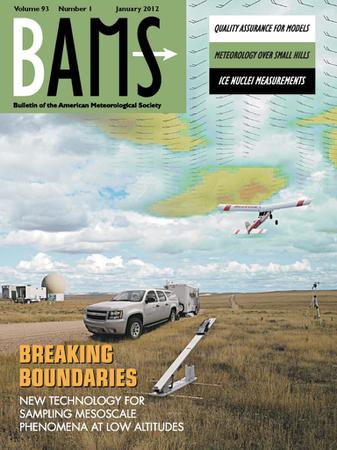COVID 影响导致印度洋观测系统出现严重缺口
IF 5.9
1区 地球科学
Q1 METEOROLOGY & ATMOSPHERIC SCIENCES
引用次数: 0
摘要
摘要 观测和了解印度洋的状况及其对气候和海洋资源的影响,对印度洋沿岸的人口众多的国家至关重要。自 COVID 大流行开始以来,印度洋观测系统出现了严重的缺口,而该系统是监测和预测区域气候的基础。大流行病扰乱了观测阵列的部署和维护巡航,也造成了设备采购和翻新的供应链问题。特别是对上层海洋热量变化进行关键测量的观测平台出现了严重的多年下降。目前,数据报告数量创历史新低,而且成功报告的平台已经老化,很快就会超过其预期的可靠运行期。对观测系统的总体影响需要几年时间才能完全了解。在此期间,我们亟需记录过去几年中出现的差距,以及这将如何影响我们提高对现实世界的理解和模型描述能力,从而支持区域天气和气候预报。这篇文章概述了印度洋观测系统预期的缓慢恢复之路,记录了成功的国际合作努力案例研究,这些努力将使观测系统恢复活力,并为今后抵御意外外部因素的影响提供指导。本文章由计算机程序翻译,如有差异,请以英文原文为准。
COVID Impacts Cause Critical Gaps in the Indian Ocean Observing System
Abstract Observing and understanding the state of the Indian Ocean and its influence on climate and maritime resources is of critical importance to the populous nations that rim its border. Acute gaps have occurred in the Indian Ocean observing system, which underpins monitoring and forecasting of regional climate, since the start of the COVID pandemic. The pandemic disrupted the deployment and maintenance cruises for the observational array and also resulted in supply chain issues for procurement and refurbishment of equipment. In particular, the observational platforms that provide key measurements of upper ocean heat variability have experienced serious multi-year declines. There is now record-low data reporting and the platforms that are successfully reporting are old and quickly surpassing their expected period of reliable operation. The overall impact on the observing system will take a few years to fully comprehend. In the meantime, there is a critical need to document the gaps that have appeared over the past few years and how this will impact our ability to improve understanding and model representations of the real world that support regional weather and climate forecasts. The article outlines the expected slow road to recovery for the Indian Ocean observing system, documents case studies of successful international collaborative efforts that will revive the observing system and provides guidelines for resilience from unexpected external factors in the future.
求助全文
通过发布文献求助,成功后即可免费获取论文全文。
去求助
来源期刊
CiteScore
9.80
自引率
6.20%
发文量
231
审稿时长
6-12 weeks
期刊介绍:
The Bulletin of the American Meteorological Society (BAMS) is the flagship magazine of AMS and publishes articles of interest and significance for the weather, water, and climate community as well as news, editorials, and reviews for AMS members.

 求助内容:
求助内容: 应助结果提醒方式:
应助结果提醒方式:


